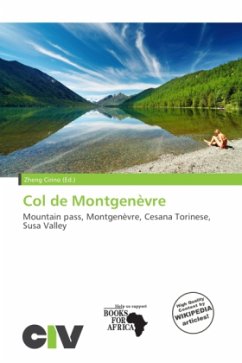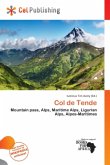Please note that the content of this book primarily consists of articles available from Wikipedia or other free sources online. The Col de Montgenèvre is a high mountain pass in the Cottian Alps, between France and Italy. The pass is named after the village Montgenèvre (Hautes-Alpes), which lies in the vicinity of the pass. It links Briançon in the upper Durance valley with the Susa Valley and its communes of Cesana Torinese and Susa in the province of Turin, Piedmont. The Col de Montgenèvre is an important road connection, and is kept open in winter. Its importance has always lain in the fact that it is the lowest of the principal crossings of the main range of the alps between France and Italy. It is used by keen cyclists notably the 1997 Tour de France and 1999 Tour de France and will be climbed again during Stage 17 of the 2011 Tour. It appears to have been first known to the Romans when Pompey used it on his campaign to Spain in 77BC, claiming to have opened up a route more favourable than hitherto. It was subsequently used by Julius Caesar in travelling to Gaul and became thereafter the main route for travel between Roman Italy and southern Gaul or Spain.
Bitte wählen Sie Ihr Anliegen aus.
Rechnungen
Retourenschein anfordern
Bestellstatus
Storno








